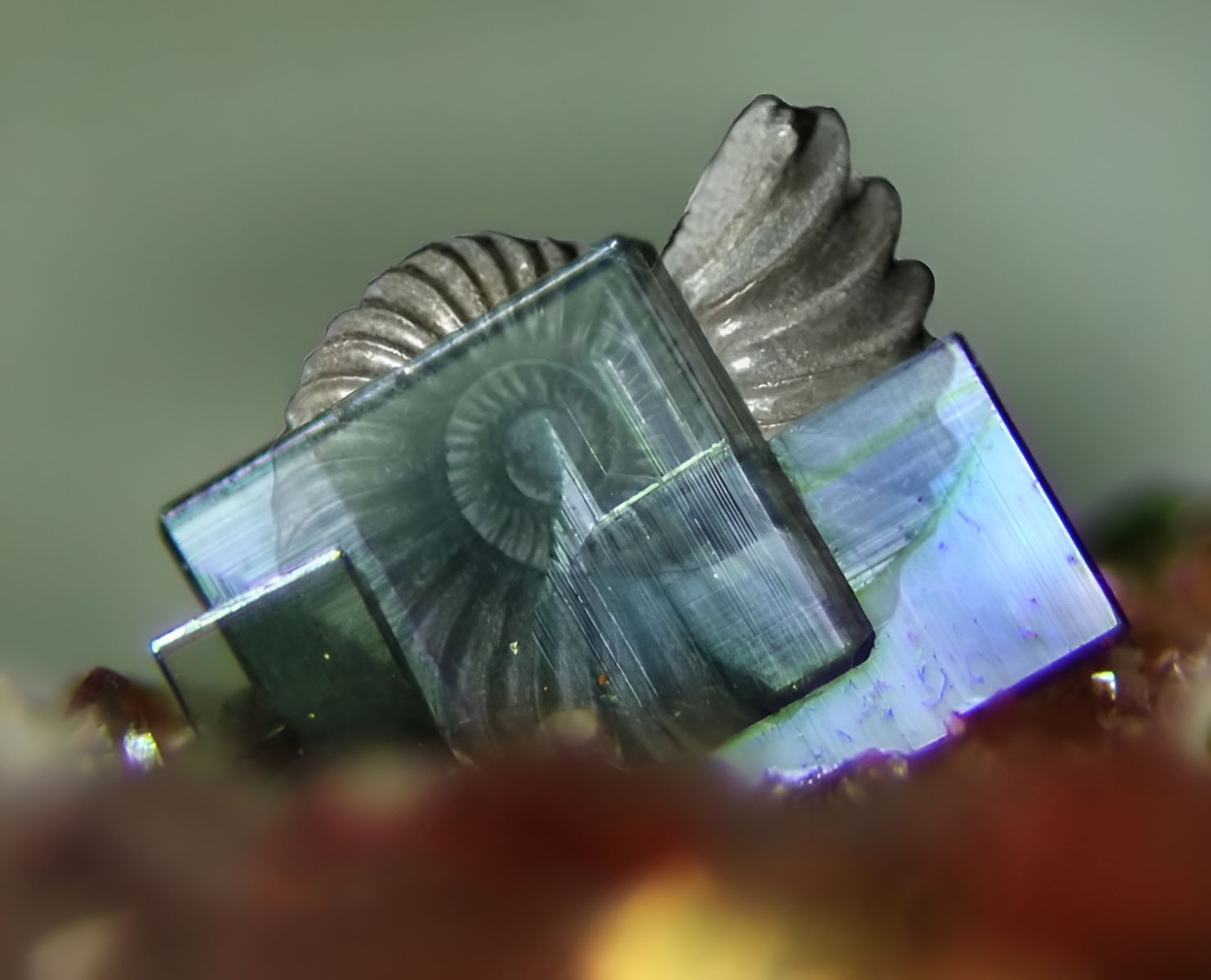
Brianite is a rare mineral that intrigues many due to its unique properties and limited occurrence. Found primarily in meteorites, this phosphate mineral has a chemical formula of Na2CaMg(PO4)2. Brianite was first discovered in 1966 and named after Brian Harold Mason, a renowned geochemist and mineralogist. Its crystals are typically colorless or white, often forming in small, prismatic shapes. This mineral is not just a scientific curiosity but also a window into the early solar system's history. Brianite provides valuable insights into the processes that shaped our cosmic neighborhood billions of years ago. Whether you're a geology enthusiast or just curious about space, learning about Brianite can be both educational and fascinating.
Key Takeaways:
- Brianite is a rare mineral found in meteorites, named after its discoverer, Brian Harold Mason. Its microscopic size and scientific significance make it a prized find for collectors and researchers alike.
- Studying Brianite helps scientists understand the early solar system, meteorite formation, and even the Moon's geological history. Its rarity and impact on planetary science make it a fascinating subject for enthusiasts and researchers.
What is Brianite?
Brianite is a rare mineral that has intrigued scientists and collectors alike. Its unique properties and origins make it a fascinating subject for study. Here are some intriguing facts about this mineral.
-
Brianite is a phosphate mineral, which means it contains phosphorus and oxygen in its chemical structure.
-
It was first discovered in 1966 by Brian Harold Mason, a renowned geochemist and mineralogist.
-
The mineral was named in honor of its discoverer, Brian Mason.
-
Brianite has the chemical formula Na2CaMg(PO4)2.
-
It typically forms in meteorites, specifically in a type known as enstatite chondrites.
Physical Properties of Brianite
Understanding the physical properties of Brianite can help in identifying and studying this mineral. Here are some key characteristics.
-
Brianite crystals are usually small, often microscopic in size.
-
The mineral is colorless to white, making it somewhat challenging to identify without proper equipment.
-
It has a vitreous luster, meaning it has a glass-like appearance when light reflects off its surface.
-
Brianite has a Mohs hardness of around 5, making it relatively soft compared to other minerals.
-
It exhibits a specific gravity of approximately 2.9, indicating it is denser than many common minerals.
Occurrence and Formation
Brianite's formation and occurrence are closely linked to meteorites. Here are some fascinating details about where and how it forms.
-
Brianite is primarily found in enstatite chondrite meteorites, which are rare types of stony meteorites.
-
These meteorites are believed to have formed in oxygen-poor environments in the early solar system.
-
Brianite forms as a result of high-temperature processes within these meteorites.
-
It is often found alongside other rare minerals like whitlockite and schreibersite.
-
The mineral has also been identified in some lunar samples brought back by the Apollo missions.
Scientific Significance
Brianite holds significant scientific value due to its unique properties and origins. Here are some reasons why scientists study this mineral.
-
Studying Brianite helps scientists understand the conditions and processes in the early solar system.
-
The mineral provides insights into the formation and evolution of meteorites.
-
Brianite's presence in lunar samples offers clues about the Moon's geological history.
-
It helps researchers learn more about phosphate minerals and their role in different planetary bodies.
-
Brianite can also aid in the study of high-temperature mineral formation processes.
Collecting and Identifying Brianite
For mineral collectors, Brianite is a prized find. Here are some tips and facts about collecting and identifying this rare mineral.
-
Due to its small size and colorless appearance, identifying Brianite often requires a microscope.
-
Collectors typically find Brianite in meteorite fragments, so acquiring meteorite samples can increase the chances of finding it.
-
Specialized equipment like X-ray diffraction (XRD) is often used to confirm the presence of Brianite.
-
Brianite specimens are highly valued by collectors due to their rarity and scientific significance.
-
Museums and research institutions often seek Brianite samples for their collections and studies.
Fun Facts about Brianite
Here are some additional fun and lesser-known facts about Brianite that highlight its uniqueness.
-
Brianite is one of the few minerals named after a living person at the time of its discovery.
-
The mineral's discovery added to the understanding of phosphate minerals in meteorites.
-
Brianite's rarity makes it a subject of interest not just for scientists but also for enthusiasts of meteorites and minerals.
-
The study of Brianite has contributed to advancements in mineralogy and planetary science.
-
Despite its microscopic size, Brianite has made a significant impact on the scientific community's understanding of the cosmos.
Final Thoughts on Brianite
Brianite, a rare phosphate mineral, holds a unique place in the world of geology. Found primarily in meteorites, it offers clues about the early solar system. Its chemical composition, Na2CaMg(PO4)2, makes it distinct. Named after Brian Harold Mason, a renowned geochemist, this mineral is a testament to his contributions. Though not commonly encountered, its study helps scientists understand planetary formation. Brianite's presence in meteorites suggests it formed under high-temperature conditions. Its rarity and scientific significance make it a fascinating subject for researchers. Whether you're a geology enthusiast or just curious, learning about brianite opens a window into the universe's history. So next time you hear about meteorites, remember the tiny but mighty brianite and its role in unraveling cosmic mysteries.
Frequently Asked Questions
Was this page helpful?
Our commitment to delivering trustworthy and engaging content is at the heart of what we do. Each fact on our site is contributed by real users like you, bringing a wealth of diverse insights and information. To ensure the highest standards of accuracy and reliability, our dedicated editors meticulously review each submission. This process guarantees that the facts we share are not only fascinating but also credible. Trust in our commitment to quality and authenticity as you explore and learn with us.


